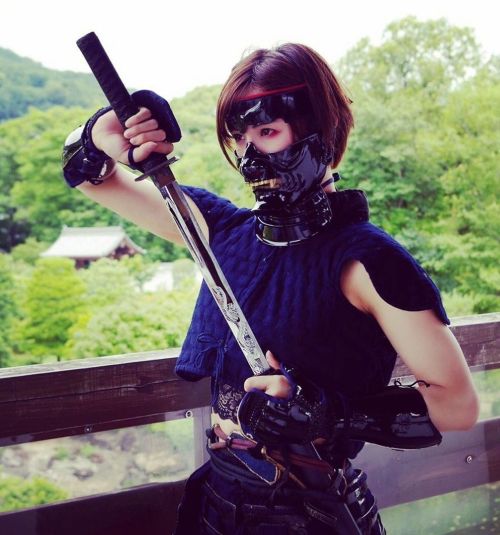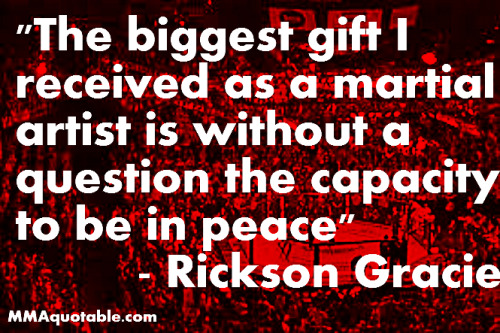#martial arts
Ultimate Ninja Battle! Fight!!
Apologies for my voice >_<
Wait for the master.
The amount of confidence oozing from this dude
i re-watched it several times, looking for what he does differently. finally i spotted it. look at the line of motion in his strike. it’s not especially fast, he doesn’t wind up more than the others, and it’s not a matter of strength – the guy who knocked over the stand probably put more muscle into it. but there’s a unity of movement he has that the others lack. his body and sword are all one curve. everything moves at once along the same line.
from a physics perspective, that means all the force he’s applying is concentrated at the point of contact between his sword’s edge and the target, and it moves at just the speed that breakage propogates through the material. too slow and it wouldn’t have enough force; too fast and he’d get ahead of the break, shoving the target over instead of cutting it.
from a writing perspective, that means that i should focus on describing a master swordsman’s smoothness more than their strength or speed, and can also have witnesses be confused at the effectiveness of strikes that don’t actually seem all that fast.
Martial arts are all about physics, my karate sensei is has a mechanic/physics diploma and he loves to explain the biomechanics of human body and how this was turned into fight via martial arts. It’s a very good way to teach. The sword master has a larger stance of the feet, much more than the others, allowing his barycenter to lower and thus giving more stability. This, united with the movement of the sword that follows the angle of his body increases the power of the blow without actually using too much muscle strength. Pretty sure he’s also just tending (not contracting) the muscles under the armpits, near the rib cage, the serratus anterior. That makes a huge difference.
Above: The science of moving like a master of martial arts.
What was most interesting to me is size has no correlation to success for any of the people.
That recent guest instructorship meant I have sparring footage of myself since Stefano demanded I bout him, and he arranged for it to be videoed.
If I want to get better, then I should watch it all and analyze it closely. Especially as I have seldom bothered to video my sparring in a long time.
I can already see my weak knee collapsing inwards on the lunge. That’s atrocious, and no wonder it hurt the next day. There’s also cutting at the sword and many more terrible sins of fencing.
If I’m going to have to swallow some pride and pore over this footage, I may compile an analysis edit. It’s something I’ve done before. Would that interest anyone?

Intercepting a wall-run attack with a teep. Fun photo by C-Bumpy Dog from the Euro Gathering in Bern. Luku was the last person keen to fight, even with the weight difference.
Combat sports, whether full contact or not, are skill sports. That is to say that skill generally has a greater impact on results than athleticism.
That’s debatable. Even before we discuss them as alternatives, athleticism isn’t a single discrete attribute, and neither is skill. Hell, strength is a skill, as StrongFirst folks love to say.
Athleticism might include absolute strength, explosivity, muscular endurance… and those are just different kinds of strength. Then we can talk about cardio-vascular endurance, and things like having a Jon Jones or Michael Phelps type “perfect freakish build for your sport”. Some kinds of athleticism are relatively fixed attributes, like reach, while others are much more open to improvement by training.
Skill, too, can come in many kinds, from tactical acumen to technical perfection to mindset. Most of these are trainable, even if an individual will retain strong habits or preferences.
Nevertheless, I’d say that combat sports, especially non-full contact ones like HEMA, are skill sports as skill levels have more of an impact than athletic levels. This isn’t to say that skill always beats athleticism, but skill difference is more important to the result than athleticism differences between competitors.
Athletic supremacy can certainly make up for skill deficiency. What is less discussed is that athleticism’s impact on performance isn’t just a matter of binaries (as the Heavy Hands folks say, you’re either faster than them, or slower, quantifying it doesn’t add much) but of adequacy.
Matches go on for fixed times or numbers of exchanges. It isn’t necessary to be able to outlast the opponent as long as you can fence that many exchanges. If you’re going to gas on exchange 15 and he’s going to gas on exchange 11, but the match is best of 10 exchanges - does it matter? Well, it may be that you can push your pace higher if you aim to also gas on exchange 11 and so win more of those 10 exchanges, but the point is that with sufficient endurance you won’t simply lose by exhaustion like you would if you only had 7 rounds in the tank.
Similarly, it doesn’t significantly affect your fencing if you can do the full splits or not, but it will affect it if you don’t have the flexibility to make a normal lunge and recovery.
It’s nice to be more athletic than your opponent, but it’s necessary to meet this minimal level of athleticism. And the sad truth is that (at least in the HEMA scene here) a great many people don’t.
What to do about it? Coming soon in Part 2.
Emergency Negativity Vent
In seeing a lot of discussions on FB about HEMA that are reminding me exactly why I can’t find any joy in it these days. Or at least find little in most of the community.
I mean there’s the odd voice of reason, but so many that just make me facepalm.

I’ve written before about the need to accept as well as manage risks and this week my dice roll came up snake eyes.
My own stick bounced back while doing some pattern drills and cracked a tooth in half. My mouthguard was in its box ten feet away.
In hindsight I was probably pushing my competence at the drill with the energy and movement we were adding, but this is about the worst consequence I can foresee happening from that drill goig awry, and Im cool with it. I’ve already had the tooth glued back together.
I enjoyed yesterday’s training. It was the first class I’ve lead in ages, and it was structured very differently. Rather than “let me show you how I do X” or “the book says to do this when you want to X”, I went for “go do X and show me how you found works best”. A different way to approach teaching, but it seemed to meet the Fit, Fun, Functional goals pretty well.

I’ve got perhaps three more sessions of material in mind on the same theme of “inventing I.33”. Hopefully, we’ll start with basic premises such as:
- I want to hit someone with a sword [I’m likely to cut down from my dominant side]
- I want to protect my nearest targets from the other fencer’s sword [using the buckler to protect an extended sword arm is a good idea]
- If I stand there and cover a cut, there’s a risk of leg hits if they’re actually cutting low [Possibly ways to counter this are to immediately threaten a thrust off my cover, to retreat with the cover, or to make the legs a relatively less shallow target by hip hinging forwards]
And via sparring games/focused drills we’ll invent I.33. Hopefully.
The first session was extremely basic cuts, learning how an arming sword handles and coordinating it with buckler cover of the sword hand. We then introduced using the sword and/or buckler to cover a direct “caveman” head attack. It semi-organically led to a bind situation! Success!
Next session will be similar stuff on the other diagonal axis, and then thrusts and breaking them, going as far as schilt-schlach and stich-slach if we go fast.
I find that knowing the “why” makes a huge difference in the quality of repetitions - for example, the final drill we did of attack/counter-cut where one person is trying to cut to the head while not exposing the sword hand and the other is trying to cover the cut while likewise not exposing additional targets and lining up a thrust. It’s easier (in my brain anyway) to know what I want the technique to achieve and work to do that than to record a perfect and idealised form of it to mimic.
If you can handle his prose style, I have some good Luis Preto stick fighting books that discuss “ecological” training as superior to teaching forms.
Oh shit? Go white girl go .
Her name’s Cynthia Rothrock and you’d better put some respect on it!
she’s part of the old guard of Hong Kong kung fu films where you had to be an honest to god martial artist to play the role correctly. when she started acting in American movies they had to keep telling her to not hit so hard lmao
Sifu Jan Lucan Interview | Tai Chi Push Hands, Social Filmmaking, Justic…











